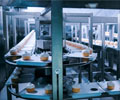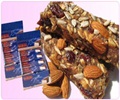When restaurants in Hong Kong closed down one after another at the peak of the financial crisis, Michael Chan noticed the queues in his Cafe de Coral fast food outlets grew longer by the day.
And the clientele was changing.No longer was the 40-year-old chain serving only middle-to-low-income customers. Among the new diners were bankers and fund managers, more used to power lunches at five-star hotels and private clubs.
"I saw a lot more white-collar workers in our outlets. They traded down their eating habit because of a growing sense of insecurity at work," Chan, chairman of Cafe de Coral Holdings, told AFP.
The company, the largest publicly-listed Chinese fast-food business in the world, operates many well-known chains in Hong Kong, mainland China, the US and Canada, including Oliver's Super Sandwiches and The Spaghetti House.
But it was the low-end Cafe de Coral which proved to be the most resilient.
"We are more defensive than our competitors at recession times. There are some double-digit corrections in our specialty restaurants, but these are offset by the healthy growth in Cafe de Coral," said Chan, 56.
Advertisement
Last month, the Hong Kong-listed firm reported its net annual profits rose 5.2 percent in the 2008/09 financial year to a record high of 441.87 million Hong Kong dollars (56.65 million US), on the back of its market-beating prices.
Advertisement
Chan, who joined the company in 1984 and is the 35th richest person in the city according to wealth-watchers at Forbes magazine, said he aimed to increase the number of his outlets in Hong Kong and overseas from 580 to 1,000 by 2014.
He said the slowdown has allowed him to acquire prime properties at bargain rates.
The company is also spending 400 million dollars to build new central food processing plants in Hong Kong and the Chinese city of Guangzhou, which should cut prices even further when they open in 2010.
The chain's success has come despite operating in Hong Kong's fiercely competitive restaurant sector.
Living in tiny flats with miniscule kitchens and working long hours, most Hong Kong people prefer to eat out.
The city is full of endless rows of noodle bars and Cantonese "cha chaan tengs", which means "tea restaurants" (known for their eclectic and affordable menus of Chinese and Hong Kong-spun Western dishes).
International competitors have also tucked in. McDonald's now has more than 200 outlets in the city, with a menu specially designed for the Chinese taste -- more chicken, less beef.
As a result, food prices have been pushed downwards and Hong Kong, which has some of the most expensive property in the world, has often been at the bottom of the Economist magazine's "Big Mac index" -- which compares the cost of the burger to gauge price differences between countries.
Despite such competition, Cafe de Coral has thrived, using each downward cycle to push a new round of innovation.
When customer numbers started to drop during the Asian financial crisis in 1997, Chan, an urban planner by training, decided to take the chain more upmarket by improving the decor.
As a result, Cafe de Coral attracted a new group of customers -- the "OLs", short for office ladies.
Then came the deadly outbreak of SARS in 2003, when lots of caterers collapsed as Hong Kongers preferred to stay at home to avoid catching the respiratory disease.
Chan moved fast to improve hygiene control in his restaurants, with staff required to wear face masks and gloves when handling food. Customers soon regained confidence.
In order to turn Cafe de Coral's new white-collar customers into loyal patrons, Chan has broadened the range of the menu, which now includes items such as New Zealand sirloin steak and seafood chowder au gratin.
Chan said such reinvention is the key to the success of the chain over the past four decades.
"In the 1970s and 1980s, customers liked eating big chunks of grilled meat, and restaurants tended to use bright interior lighting. Now, they are much more health-conscious, and prefer a cafe-style comfy setting," said Chan, who regularly dines at his outlets to observe customers.
"The secret is to keep rejuvenating the brand. There is no way a 40-year-old catering business will survive if it never changes."
Source-AFP
TAN












